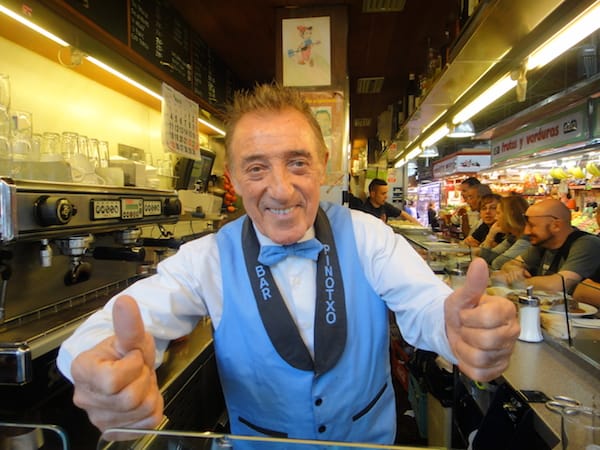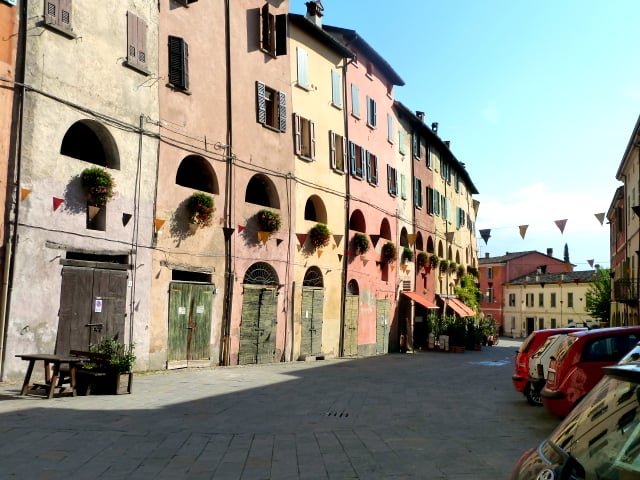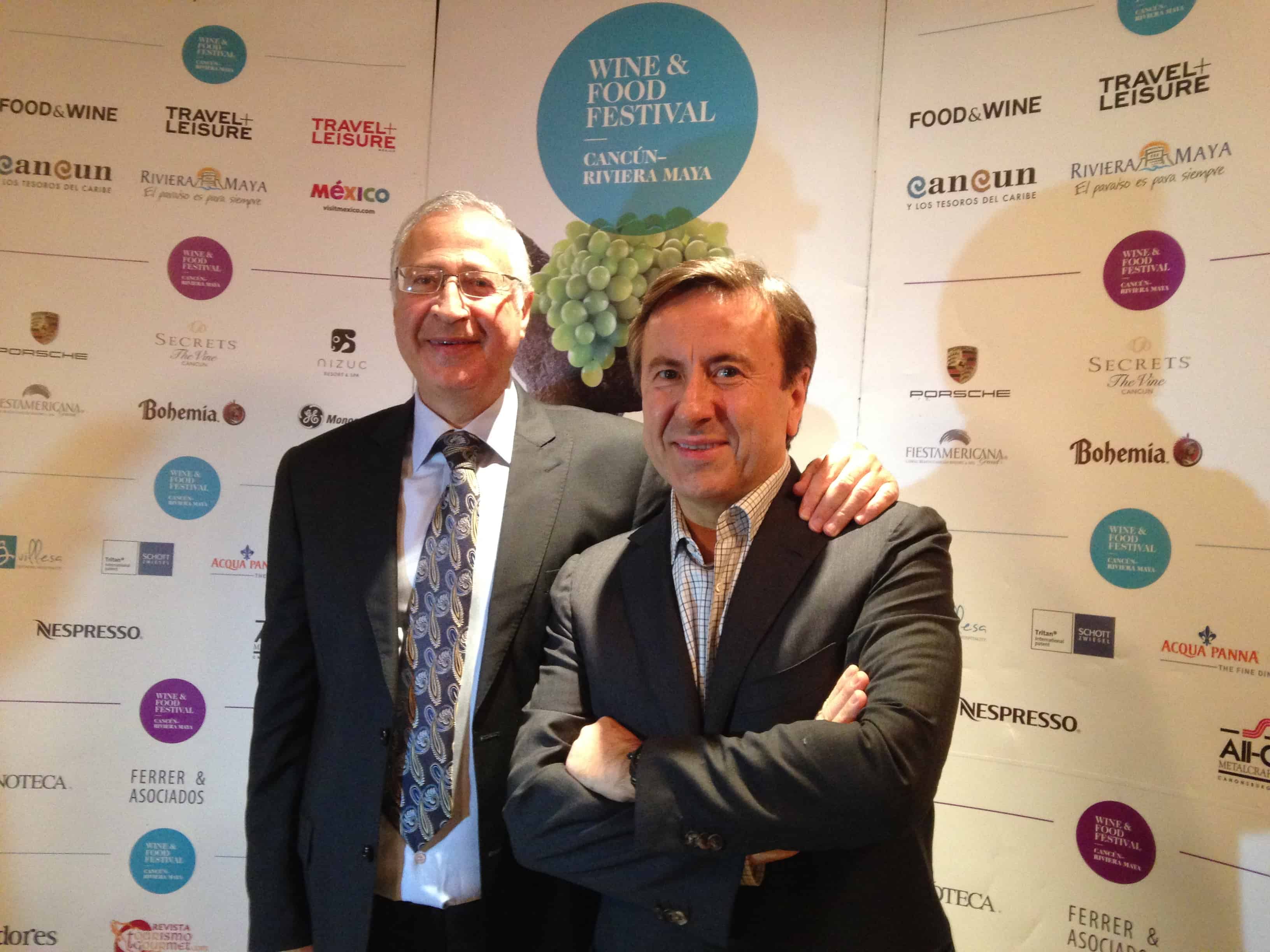Public markets offer a taste of a city and its culture


Strolls through public markets offer tourists far more than a bite to eat.
The Santa Fe Farmers Market sits parallel to the tracks of the historic railroad depot. As you approach, the sweet smell of chiles wafts through the air. A man is turning the crank of a metal drum of bright green Hatch peppers roasting over an open flame. The harvest season for these native-to-New Mexico peppers extends from August through November.
The year-round market includes a 9800 square-foot indoor pavilion (Gold LEED certified by the U.S. Green Building Council) as well as outdoor stalls under white canopies. Tables display mounds of artfully arranged fruits and vegetables from local farms; some growers sell off the back of their trucks.
Like the city, the market’s complexion reflects a mix of European, Anglo and Native American cultures. The vibrant tablecloths have southwestern motifs and colors. Ristras (strings of red chile) hang from atop the stalls. Men with cowboy hats and gray ponytails pass by as we sample blue corn donuts. Gluten-free signs are ubiquitous. We marvel at tomatoes the size of grapefruits and the varied colors of peppers. We stop to talk to The Lavender Lady. Clothed in lavender silk with a matching hat, she eagerly shows us hand-sewn sachets filled with dried lavender from her farm.

Santa Fe’s is a quintessential farmers market, ranking with the best from around the globe.
Markets around the world
In her seminal book, Public Markets (Library of Congress, 2008), Helen Tangires notes that markets are a worldwide phenomenon with “traditions as old as cities themselves.” For thousands of years, traders met there to exchange goods. But for travelers, she says, they have always offered unparalleled opportunities to visit cities in microcosm.
With the growing interest in culinary travel—as witnessed by popular TV shows like Anthony Bourdain’s No Reservations and The Layover— foodies are as likely to visit markets as they are to get on hop-on hop-off buses or visit iconic landmarks. Many markets are sited in architecturally or historically significant buildings; others aren’t contained in a single building but are spread over a contiguous area of a city. While markets ostensibly celebrate fresh, local foods, they are equally important as gathering places whose appeals cuts across social and economic class. So visitors gain a glimpse into the lives of people of different cultures.
Most operate year-round, selling local foods—literally ranging from fruits to nuts— including, seasonal produce; baked goods; beans and grains; fresh and processed meats, fish and seafood; candies and nuts; coffees and teas; dairy products; prepared foods; herbs and spices; flowers and plants; and seasonal decorations and other handicrafts.
Many have counters and communal tables for informal snacks and conversation. The aromas of cooked foods and the sounds of strolling musicians add to the celebratory ambience. Increasingly, markets are offering cooking demos and tours; operators of city walking tours often include markets on their itineraries, too.

Remarkably, no two are alike and each has its own personality.
A peek inside several interesting markets
When my husband and I travel, we visit at least one local public market. Unlike many tourist attractions, there’s no cost for admission. Here are several favorites:
La Boqueria (Barcelona, Spain)

Along with Antonio Gaudi’s architecture, the Boqueria is one of Barcelona’s most celebrated attractions. It began as a traveling market in the 1200s, moved to its present location as an open-air market some 600 years later, and finally gained a covered metal roof in 1914. Some vendors have worked here for four generations. You’ll be dazzled by the Iberico hams and chorizo sausages hanging above the stalls, displays of salted and tinned fish, and candied fruits arranged like still lifes. Be sure to stop at Pinotxo Bar for tapas where you’re likely to be served by the legendary and omnipresent Juanito Bayan.
The Cours Saleya (Nice, France)

With its colorful striped awnings, this outdoor market in Old Town is filled with produce and fragrant flowers. Tourists are drawn to the many artisanal products, including dried lavender, olive oil soaps, Herbes de Provence, candles, flavored sugars, and placemats. Taste the socca (chickpea flour flatbread) at Chez Theresa made in a pan atop a charcoal-filled drum. Her stall has been there for more than a quarter of a century.
Mercado Ignacio Ramirez (San Miguel de Allende, Mexico)

This crowded covered market holds a huge selection of food, flowers, clothes, shoes, housewares, crafts, and anything you might find in a big box store in the States. Centrally located near El Jardin (the main town plaza), it features Mexican specialties such as nopales (pads from prickly pear cacti), corn husks (used to make tamales), chile peppers, tamarind (a fruit used in desserts), pottery, silver jewelry and flor de piedra (a plant known for its medicinal properties). Don’t be surprised if strolling musicians come up behind you.
Ostermalms Saluhall (Stockholm, Sweden)

In operation since 1888, this red brick covered market is smaller and more upscale than many others in Europe. It showcases cooked foods, salads and seafoods (including Swedish specialties such as smoked salmon, gravlax, herring and crayfish) displayed in sparkling glass cases. With sit-down restaurants and cafes, it’s a great place to people watch. Like much of the food in Stockholm, it’s high quality but pricey.
Mercado Municipal de San Isidro (Lima, Peru)

Located in an upscale, suburban area of Lima (close to Miraflores, a seaside community) this market is a bit off the tourist track. You’ll find (and will probably be offered samples of) a diversity of vegetables and exotic fruits native to Peru, including: purple corn, white corn with supersized kernels (choclo), cherimoya (custard apple), pitahaya (dragon fruit) and aguaymanto (gooseberry). You’ll also see many of the thousands of varieties of colorful potatoes grown in Peru. In the stalls at the back outfitted with residential kitchen appliances, locals sit down for a hot meal and a can of Inca Kola.
[A version on this article appeared in the Sunday Travel Section of the Chicago Tribune on April 20, 2014.]
Also on MoreTimeToTravel.com






I agree wholeheartedly!
When we visited Paris, we stayed in the Rue Cler area, specifically for that reason. Waking up every morning and strolling through the market lloking for breakfast was a treat, in more ways than one!
Great post!
Len
Seniortechandtravel
Love the size and scale of Rue Cler, too~
What a great subject – and photos! Public markets and church services really give you a peek into the culture when you’re traveling.
I feel the same way as you do about church services, too, Judy!
It’s great that you started with the Santa Fe Farmers Market, Irene. We love our market and have written a bunch about them on our blog. We buy our roasted green from farmer Matt Romero who is there roasting chiles every Saturday in late summer. So many of the farmers are committed to sustainable growing practices. We love the fresh bounty on our table in season.
You’re so lucky to live someplace with a world-class market!
I love visiting public markets when I travel. I always find interesting things and food.
Like you, I love to visit markets as I travel. One of my favorites is the Mahane Yehuda market in Jerusalem, http://travelswithcarole.blogspot.com/2012/04/good-eats-mahane-yehuda-market.html
It’s a shame that farmers markets in Canada and the U.S. tend to be artsy fartsy events with overpriced produce. We travel a lot in Mexico and that’s where you go to get the best, the freshest, and the cheapest. Not sure why that’s changed in Canada and the U.S., but we don’t find many produce deals in those countries. Still, they’re not a bad place to wander around for free.
Siracusa, in eastern Sicilia was alive! We were too intent on the just-scooped-from-the-
sea cozze and clothing bargains to snap pictures, regretfully.
Great images here- enjoyed your article!
Sounds like a great find!
Like you, I enjoy visiting public markets. The Mercado Ignacio Ramirez looks wonderful.
I love shopping at the mercados and family run shops in the front room of private homes here in Central America. It’s fun to use my beginner Spanish and feel like I’m a part of the local community. Wandering around these markets can be a real learning experience and a fun way to connect with people. BTW – I love your “Lavender Lady” photo!
Yes, we love the development of markets into social centers, and really enjoy the architectural settings and history. We’ve been able to follow the Boquería in Barcelona and San Miguel market in Madrid for decades! Fun.
Markets are one of my very favorite things about travelling. I’m so pleased to see you feature the Cours Saleya and the Bocqueria which are two of my faves in Europe. One of my favorite markets was in the middle of downtown Jimbaran Bay in Bali – despite visiting on a Saturday morning in the middle of Australian school holidays (when many people visit Bali) my daughter and I were the only non-locals visiting.
I absolutely love the open-air markets where you can see the food being prepared. I seem them out wherever I go, and I’ve never had a problem with “street food.” The aromas are heavenly and the colorful and unique display of food make great photo ops.
It’s easy to see you love markets and have spent many enjoyable hours browsing stalls and exploring the taste and flavours of world cultures at their freshest and most authentic. It’s especially nice to see the photo of the nopales at the Mercado Ignacia Ramirez – makes me want to slice them up and make a salad! Yum!
When we travel, we do our best never to go past a market without stopping. It is where you can interact with locals, see what should be on the menu, and is just plain fascinating!
You simply can’t beat local markets for their regional food, products and of course they ooze the essence of the region.
Smells, sounds, tastes, textures and the perfect spot to people watch… and they’re free!!
Thoroughly enjoyed your coverage. Markets are marvellous. They often give me the chance to masquerade as a local. A wonderful feeling. Here in British Columbia I regularly shop at our local farm markets. In summer and fall he produce is usually freshly harvested in a neighjbouring field, prices are right, and you can more easily chose the quantity you prefer. When overseas, markets are where I find food for the road – and thought.
I absolutely LOVE local markets and attend them at every opportunity as they truly give you insight as to the personality and specialties of a destination.
Wherever I travel I spend a lot of time in the local markets. I often shop in the traditional markets here in Korea. I really should do a post one of these days. The thing is, the Korean vendors often react negatively when you take a photo of their stalls.
Your collection is outstanding!
You can certainly start with pictures of the produce:-)
The purple corn looks delicious, I want one! 🙂
Public Market visits are my fave except the tourist attractions. I love to see exotic fruits and food.
We love public markets too! In Vancouver, we like to take visitors to Granville Island. Its array of organic cheeses, fresh produce, baked goodies and seafood are often irresistible, and various items inevitably make their way home with us for dinner that evening…
Yes, it’s so nice to leave near a public market so it is interwoven with your day-to-day life.
Most Americans have to depend on large commercial supermarkets.
Loved your post..there are so many more markets that I would like to visit..am bookmarking your post for future travels